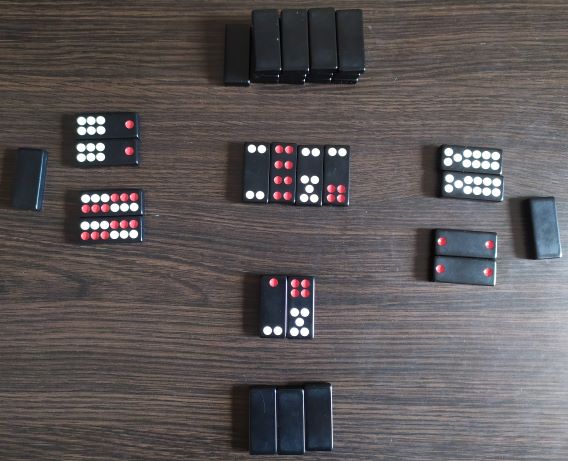A Korean game originally named 짝맞추기. The game was described by Steward Culin. Can be played from two to four players.
The goal of the game is to collect three classic pairs. Since the game is Korean, the military tiles are paired according to the Korean system.
Each player gets five tiles, except for the first player who gets six, the rest form a deck. The first player lays out all the pairs, if he has them, and discards one tile. Each subsequent player can either take the last discarded tile, provided he can pair with it, or he takes a tile from the deck. Then he lays out a pair, if he has one, and discards one tile. The game is played counter-clockwise until one of the players collects three pairs.

Creating classic pairs is a very straightforward task, so the game does not require much effort. Whether this is good or bad, everyone decides for himself.
Rules analysis
Unfortunately, the described game often ends in a draw – when no one is able to collect three pairs. In a four-player game, almost 90% of all games end in a draw, which can hardly be called an interesting game.
Since Culin was often wrong when describing games, perhaps he also did not take into account some detail here. If you add the rule that any player, not only the next one, can pick up the tile that has just been placed, with the condition that a pair is laid out with this tile, then the statistics of the games improves significantly and approximately every tenth game ends in a draw. In such a case, if a player took the last discarded tile and laid out a pair, then the game continues from him. If no one took the discarded tile, then the game continues as usual. This rule is not taken out of a blue, as the same rule is present in Mahjong, the most popular collecting game in China.
There are other options for solving this problem – for example, shuffle all the discarded tiles when the deck runs out and continue playing. But the previous option seems more likely to me.
You can try playing this game here: http://www.onlinedominogames.com/jjak-mat-chu-gi
The rules are taken from Pagat website, so the tile pairing is Chinese. But it does not affect the game itself. The author of the game solved the problem of a draw in his own way – he simply gives every player a point for every collected pair. This way collecting three pairs is not necessary.